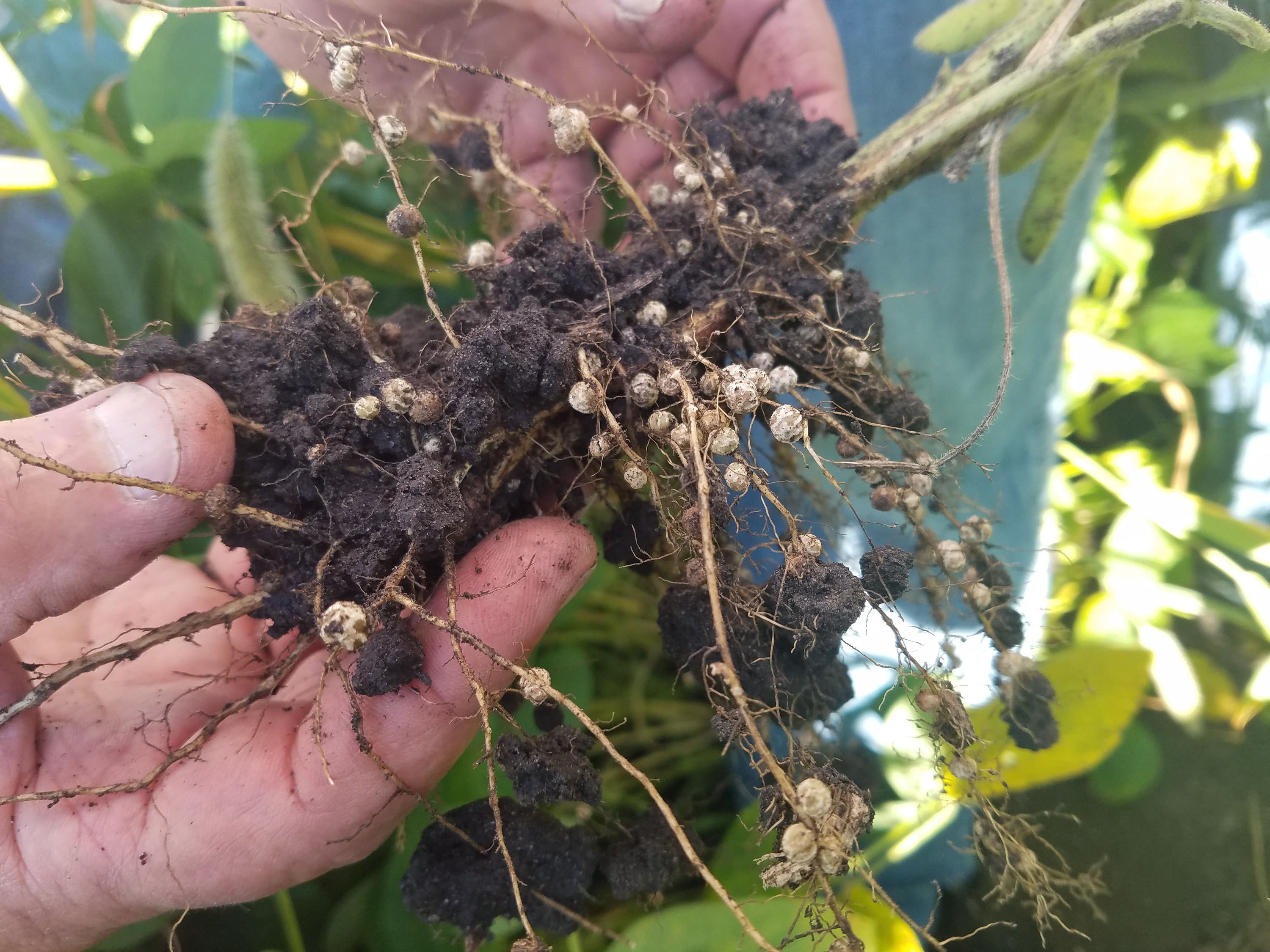Maintaining or re-establishing a biological balance can help crops survive and/or thrive in their natural environments. It may be the unintended consequences of the inputs and practices employed over decades that have disrupted the balance. Looking at the modes of biological action that act as protection for the plants, we can see a potential benefit to encouraging those natural processes.
One organism creates an unwelcoming environment for another, effectively excluding the second organism from becoming established without directly killing it. An example of this would be creating a film on a root surface to prevent pathogens from infecting the plant.
The secondary metabolites that contribute to plant health and nutrient density.
Some microbes (gram-positive bacteria) consume pathogens
(like botrytis and anthracnose) as a food source as seen on leaf surfaces and orchard floors.
Stimulating plant response to disease pressure before actual diseases are detected. This results in strengthened plant defenses, helping prevent the onset of actual disease when it is imminent.
BIOACTIVE™ LiquiLife and LiquiLife+ (formerly CX-1 and CXPro) are a proactive/protective approach to plant health, not curative. Timing and observational farming can help reduce the rates and frequency of fungicide applications; over time and in some cases, allowing the grower to get through the season without using them.
The Path You’re On Without Good Biology:
Diminished soil structure decreases soil respiration and oxygen availability for seeds and plants. This results in reduced seed/soil contact, seed hydration, and reduced germination rates in the spring.
Diminished aggregation reduces water infiltration and water holding capacity. This takes much of the resilience out of the farming system.
Over time, and without a good habitat for biology, the microbes you count on to mineralize, solubilize, fix, chelate, protect, and actively deliver macro and micronutrients to your crops no longer function well in your soil.
As this downward trend continues, farmers become more reliant on purchased fertilizers and the next more expensive generation of crop protection inputs.
BIOACTIVE™ in Action
Scott Veendenhall and Skip Grosskreutz from Clear Lake, WI talk about their success in eliminating white mold by applying LiquiLife (formerly CX-1) to their corn and soybeans in this crop resiliency video.
- Residue pass on corn the previous fall.
- In-Furrow application — The mode of biological action here is Competitive Exclusion, in which biology fends off the pathogen as in sudden death syndrome.
- Foliar, ideally 7-10 days before the onset (impossible to know for certain when that is). The mode of action here is Bio-Sanitation—Leaf surface area coverage is key, and biology suppresses diseases like white mold, botrytis, fusarium, and more.

Remember our broad-spectrum biologicals, LiquiLife and LiquiLife+, are not a fungicide, they are not killing things; but rather promote a healthy balance of natural, authentic biology that, in nature, keeps things in check.
BIOACTIVE™ Builds Resiliency
Here are a few more field observations of our customers utilizing BIOACTIVE™ and noticing improvements in crop resiliency.
- A Florida agronomist - “Black rot (bacterial infection) is taking down fields of broccoli, bactericides are not working. About the only broccoli being harvested are fields with LiquiLife+ incorporated into the program. A farm using LiquiLife+ reported that black rot was still present, but now manageable, and harvested approximately 80% of the crop at one time, exceptional for broccoli. Sizing was highly desirable and uniform, with 500-600 boxes per acre headed to market.”
- White mold on Dry Beans – “All around us mold was breaking out, a consultant said there was no way to avoid it in our fields—we did thanks to biology” (LiquiLife and Liquid Supercharger).
- Amish group Veggies - “It was a pretty good year, but there were lots of late season disease pressures because of the hot wet conditions. Everybody saw it except the guys using liquid biologicals” (LiquiLife)
- East coast greenhouse - “Botrytis Oh my Gosh, using LiquiLife (formerly CX-1) almost completely eliminated it in our greenhouse.” (LiquiLife)
- Organic apple grower - “I have been working on the Orchard floor for 3 years now, I feel like I have eliminated scab from my operation.” (LiquiLife, Liquid Supercharger, plus other biologicals)
- “LiquiLife (formerly CX-1) on my Squash didn’t eliminate the fall onset of Powdery Mildew, but it did delay it for a couple of weeks, this meant 15% overall revenue increase for me.” (LiquiLife and Liquid Supercharger)
- Pete Creguer - long-time farmer and industry professional. In very wet 2018, when everyone else in his area saw 12%-15% vomitoxin levels in Corn, he experienced 1%-2% vomitoxin levels in his corn crop. “I just don’t have the same fusarium blight issues in my wheat” (as his neighbors).
- Hemp growers in Michigan - “Me and Dr. Matt were the only two to use LiquiLife as a foliar…we were the only ones to pass the mold test”.


